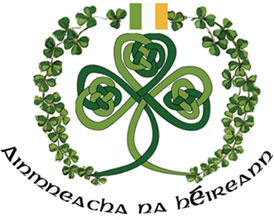

Until the past half-century, every Irish family had a Patrick and a Brigid. These were the most common names in Ireland throughout the Penal days, when the race bound itself to its persecuted tradition by constantly invoking Patrick, Brigid, and Columcille. Nowadays, Patrick is the second most common man's name in Ireland. The late Rev. John Woulfe, author of the standard work on Irish names and surnames, analysed a baptismal list of 1000 children in County Limerick. In this list, there were 94 Johns and 65 Patricks, with Michael as the third commonest name (51), and William the fouth (43); Colum did not appear at all, since the name of the third Irish Patron long since has fallen into neglect, save in Columcille's native Donegal. The list, in respect of girls' names, showed Mary 150 times, for our Lady's sacred name is borne by the eldest girl in virtually every family. Margaret came next (75), and then Catherine (45), Nora (40), Johanna or Siobhán (35) and Brigid only sixth, with 30 baptisms, the same number as Julia and only five more than Elizabeth and Ellen, which numbered 25 each.
The decline in the popularity of the long-beloved name of Brigid is due to the corruption of the name into the undignified Biddy in the anglicized nineteenth century. In times when what we call the stage-Irish tradition was in vogue, "Irish Paddy" and "Irish Biddy" were figures of fun, symbols used in anti-Irish caracatures by the ill bred, and it needed the Gaelic Revival of the present century to restore the associations of the name which once stood in such high honour.
Another circumstance told against the Irish name. In the Penal age and far into the past century, the English-speaking world knew virtually nothing of the saint, whose written records were locked up in the unprinted, forgotten old Gaelic books, and whose traditional memory was cherished only in the secret world of Gaelic speech, by a race that lacked schools, printing press, political freedom, and worldly respect. Accordingly, when there was any mention of St. Brigid in the English-speaking world, it was common to confuse her with St. Bridget of Sweden, who died in 1373; it often happened, for example, that people seeking holy pictures of St. Brigid were supplied from Germany with images of the Scandinavian saint through the ignorance, in continental centres of ecclesiastical art, of the existence of any other saint of such a name. The Scandinavian spelling came into vogue; and Irish children were called Bridget, when the intention was to name them after Brigid. Apparently, the pronounciation of Bridget with a 'j' sound came in with the Swedish spelling. It is not agreeable, and the beauty of the Irish name suffered.
The Irish name ought to be pronounced with a hard 'g'; that is, not as "Brid-jit." In its most ancient form, the name was spelt with a final 't', Brigit, and was Latinised Brigitta. From an early time, however, and down the ages, it was spelt Brigid; Latin form, Brigida. However, the complicated matter of orthography is not ended at this point; for in Modern Gaelic--the language as spoken for the past seven centuries--the 'g' becomes silent, and the name usually is spelt in Gaelic Brighid (genitive Brighde), with the pronounciation "Bree-id."
from The Saints Of Ireland © 1942 by Hugh de Blacam, Bruce publishing Co, Milwaukee.